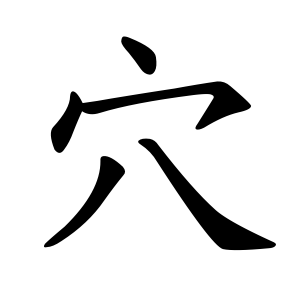穴
- hole;
- cave;
It conveys meanings such as: hole, cave, pit, or depression in the ground.
Usage in Korean
Characters with 穴
8 strokes
13 strokes
穴
구멍
혈
gumeong
hyeol
Kangxi radical:116
Strokes:5
Unicode:U+7A74
Cangjie input:
- 十金 (JC)
Composition:
- ⿱ 宀 八
